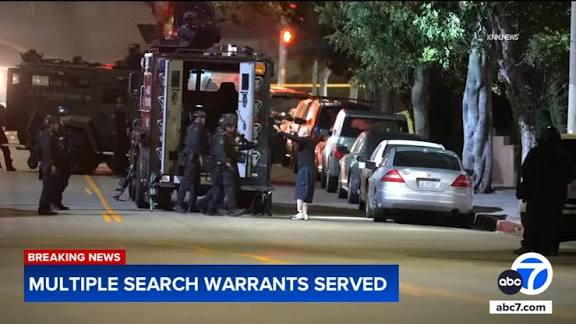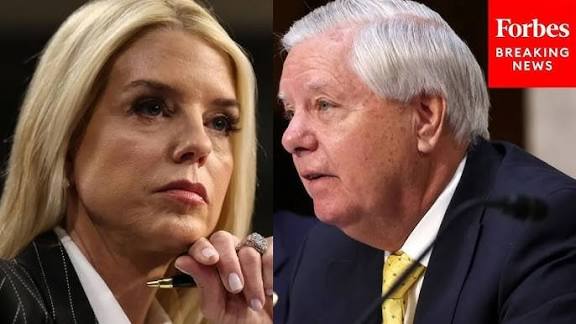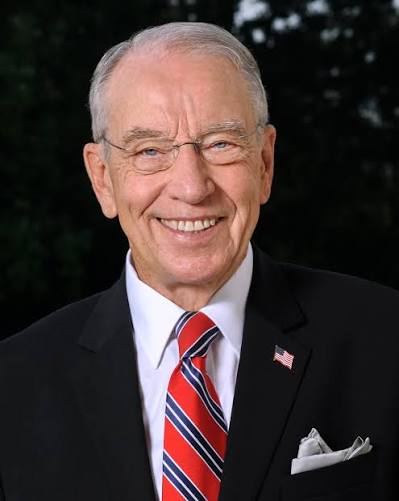USA Govt Shutdown Imminent: Congress Block Funding,Healthcare,Agencies Brace for Fallout
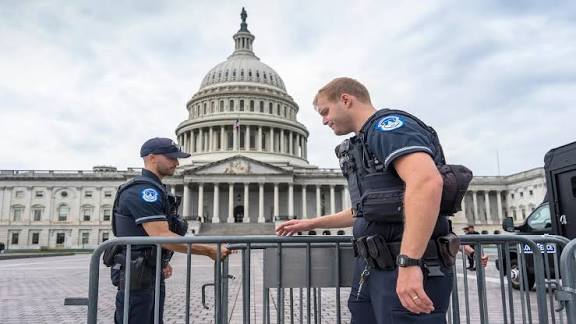
Democrats push for healthcare funding, seeking the Republicans narrow expenses, putting the government shutdowns at risk as a time limit. Today we will discuss about USA Govt Shutdown Imminent: Congress Block Funding,Healthcare,Agencies Brace for Fallout
USA Govt Shutdown Imminent: Congress Block Funding,Healthcare,Agencies Brace for Fallout
As of late September 2025, the United States finds itself on the brink of another federal government shutdown. With the fiscal year ending on September 30 and Congress unable to pass appropriations or a continuing resolution, critical federal services—from healthcare programs to national agencies—are preparing for disruptions. The stakes are high: millions of Americans could feel the impact through delayed services, furloughed workers, and healthcare uncertainty. In this article, we examine what is driving the impasse, who stands to be harmed, how agencies are preparing, and what next steps Congress might take.
What Is a Government Shutdown—and Why Now?
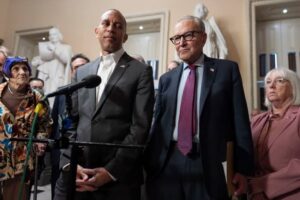
A government shutdown occurs when Congress fails to pass the necessary appropriations bills or a short-term continuing resolution (CR) to fund federal agencies and programs for the coming fiscal period. Without approved funding, non-essential operations must cease until Congress acts.
Historical Context
Shutdowns are not new in U.S. politics. The longest modern shutdown spanned 35 days in 2018–19, when nearly 800,000 federal workers were furloughed or asked to work without pay. During shutdowns, federal employees are often classified as “excepted” (essential) or “non-excepted.” Excepted employees continue working without immediate pay; non-excepted workers are furloughed temporarily. Under the Government Employee Fair Treatment Act of 2019, however, federal employees affected by furloughs or back pay are retroactively compensated once appropriations resume.
Why This One Is Particularly Dangerous
What sets the 2025 threat apart:
-
The White House has directed agencies to draft “reduction in force” (RIF) plans, implying permanent layoffs rather than temporary furloughs.
-
Many programs—particularly healthcare subsidies under the Affordable Care Act (ACA)—are at the heart of the dispute, making compromise politically fraught.
-
Some federal agencies, such as those funded by independent revenue sources or previous legislation, may run unaffected, creating a patchwork of operations.
The Political Deadlock: What’s Driving the Impasse
At the core of the shutdown threat is a partisan standoff over spending priorities, especially healthcare.
Republican Strategy: “Clean” Funding Bill + Cuts
The House Republican majority has pushed to pass a clean continuing resolution—a short-term funding extension with minimal policy riders—to keep government open through November.
They argue that adding healthcare demands or other policy changes would derail the funding process.
However, the proposed CR omits or scales back key healthcare-related funding, such as ACA tax credits and Medicaid support, putting it at odds with Democratic priorities.
Democratic Counterproposal: Protect Healthcare, Extend Funding
Democrats are refusing to support a funding extension without securing protections for healthcare programs. Their counteroffer would:
-
Restore or extend ACA subsidies set to expire at the end of 2025
-
Reverse Medicaid cuts embedded in the “One Big Beautiful Bill Act”
-
Include guardrails preventing the administration from impounding funds after Congress approves them
-
Fund programs such as public broadcasting and foreign aid withheld in the GOP plan
Senate Democrats blocked the initial Republican CR passed by the House, citing its inadequate safeguards for health and social services.
Escalation: Threats, Blame, and Mass Firings
With the political temperature rising:
-
The White House instructed agencies to draw up mass layoffs if a shutdown occurs—not just furloughs.
-
Both parties are attacking the other over who would take blame. Republicans accuse Democrats of blocking a solution; Democrats say Republicans are gutting healthcare for political advantage.
-
If the Senate cannot reach 60 votes, the CR is doomed. Republicans, though controlling both chambers, cannot pass the extension in the Senate without Democratic support.
What Shuts Down—and What Survives
In the event of a shutdown on October 1, the scale of disruption will be severe—but not absolute. Some programs and services continue, others pause.
Likely to Halt or Be Severely Affected
-
Non-essential federal services and offices
Many departments and programs deemed not critical will suspend operations—e.g. some regulatory reviews, public outreach programs, grant disbursement, research initiatives. -
National parks, museums, and historical sites
These face closure or limited access depending on staffing. -
Federal courts and legal operations
Some judicial processes may pause, except in emergencies. -
New hiring, training, expansions in agencies
For instance, the FAA would halt hiring and training of air traffic controllers. -
Grants, social programs, and contracts
Disbursements and contract awards often rely on appropriated funds, which may be frozen. -
Research funding and innovation grants
Agencies like NIH or NSF may suspend new awards or pause ongoing cooperative agreements.
Likely to Continue (at least initially)
-
Essential operations (“excepted” employees)
Tasks critical to public safety, national security, or life preservation will carry on. These workers may not be paid immediately but must remain on the job. -
Social Security, Medicare, and Medicaid (for existing claims)
These safety net programs are typically funded under mandatory spending, not annual appropriations, so payments often continue. -
Postal Service, USPS operations
USPS is funded through its own revenue streams, so mail delivery may continue. -
Programs under independent funding or previous legislation
Some agencies benefit from dedicated revenue or prior appropriations and may stay functional.
Healthcare in Crisis: How Patients and States Brace
Healthcare is arguably the linchpin of this standoff. Millions rely on ACA subsidies and Medicaid support, both of which face uncertainty if funding lapses.
Risk to ACA Subsidies
The subsidies under the Affordable Care Act help lower-income Americans afford insurance. Those benefits are slated to expire at the end of 2025, and Democrats are demanding extensions as part of any funding deal. If subsidies lapse, many individuals could face sudden premium increases or loss of coverage.
Medicaid Cuts and State Burdens
Under the One Big Beautiful Bill Act, new eligibility requirements, work mandates, and more frequent review cycles have been imposed, reducing federal Medicaid funding over time. States already reeling from budget pressures may be forced to reduce services, cut provider payments, or limit eligibility if federal support dries up.
Hospitals, especially safety-net and rural facilities, are particularly vulnerable. Many depend heavily on federal Medicaid payments; a sudden funding cut could threaten their viability.
Public Health Programs Threatened
Beyond individual insurance, a variety of federal public health programs—disease control, epidemiology, rural health grants—face scaling back. Some states are already feeling the pinch after prior cuts to pandemic response and federal grant programs.
How Agencies and Employees Are Preparing — and Dreading
Furloughs vs. Layoffs
Unlike previous shutdowns, agencies are instructed not just to plan for furloughs, but permanent reductions in force (RIFs) where positions may be eliminated. The administration has already reduced federal workforce numbers by ~200,000 this year, with projections possibly reaching 300,000 cuts for 2025.
Decisions are being made about which programs are “not consistent with the President’s priorities,” making them targets for elimination.
Agencies are drafting contingency plans to ensure that core safety, security, emergency, and border operations continue functioning. Some offices are pulling forward resources to continue operations under limited budgets.
Employee Anxiety and Organizational Strain
The threat of permanent job loss is placing large psychological and moral strain on federal employees. Union leaders warn that workers should not be “pawns” in political brinksmanship. Many agencies already face understaffing, low morale, and exit pressures before the shutdown even hits.
Legal Risk and Authority Battles
Some Democrats argue that impounding or rescinding funds approved by Congress is unconstitutional, and may try to challenge executive maneuvering in courts.
The Economic, Social, and Political Fallout
Economic Disruption
A shutdown has real economic costs. The U.S. Travel Association estimates more than $1 billion in weekly losses if air traffic training, hiring, and operations slow. Consumer confidence can drop, stock volatility may rise, and delayed payments or contracts impose ripple effects across states and local governments.
Social Stress
Low-income and vulnerable populations will suffer disproportionately—delayed grants, reduced services, and healthcare uncertainty. States already facing declining revenues may have to further cut programs or services.
Political Backlash
Historically, public sentiment has criticized shutdowns and held elected parties responsible. In 2018–19, polling showed that Congress and the White House took hits in public approval. With midterm elections approaching and healthcare front and center, both parties risk electoral consequences.
What Could Happen Next: Paths Forward
1. Last-Minute Deal and CR Passage
If leaders budge, Congress might pass a stopgap CR—likely with modest healthcare concessions—to avert the worst damage. Republicans may have to drop insistence on “clean” bills or accept Democratic priorities to secure Senate support.
2. Partial or Staggered Reopening
In past shutdowns, Congress sometimes reopened key agencies or sections in phases. Courts, national security, and defense often resume first. Less essential agencies may remain closed longer.
3. Prolonged Shutdown and Deep Cuts
If neither side blinks, a protracted funding lapse could deepen cuts, push more permanent layoffs, and create long-term damage to agencies, infrastructure, and public trust.
4. Legal or Judicial Intervention
Courts could be asked to block impoundment of funds or rule on disputes about funding authority. These legal moves, however, take time and may not provide immediate relief.
Conclusion
The U.S. is at a precarious moment. The looming government shutdown threatens to fracture trust in institutions, jeopardize health services for millions, and strain government capacity. While both parties play blame games, real human consequences loom: delayed care, furloughed workers, and weakened public services. The coming days are crucial. Whether Congress acts responsibly—or lets the shutdown spiral—will define this moment’s legacy.
How useful was this post?
Click on a star to rate it!
Average rating 0 / 5. Vote count: 0
No votes so far! Be the first to rate this post.
About the Author
usa5911.com
Administrator
Hi, I’m Gurdeep Singh, a professional content writer from India with over 3 years of experience in the field. I specialize in covering U.S. politics, delivering timely and engaging content tailored specifically for an American audience. Along with my dedicated team, we track and report on all the latest political trends, news, and in-depth analysis shaping the United States today. Our goal is to provide clear, factual, and compelling content that keeps readers informed and engaged with the ever-changing political landscape.
